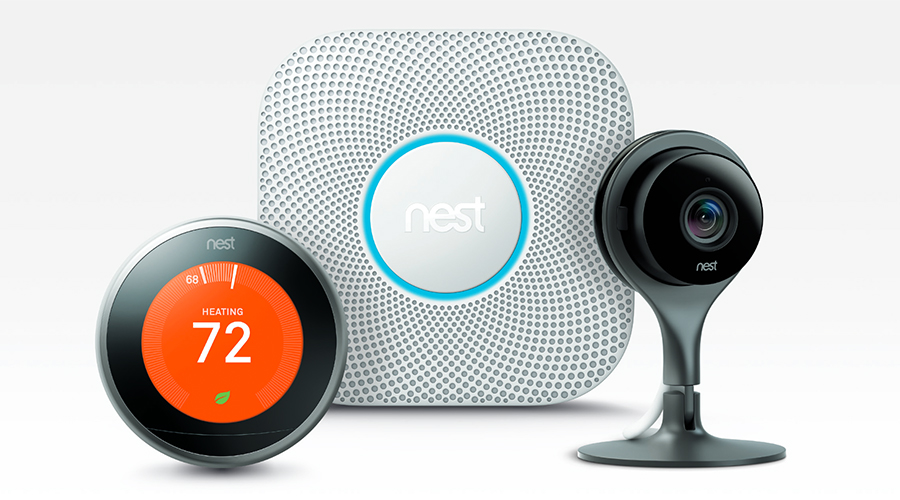Many of the things in our homes have been there so long we don’t even think about them anymore. With all the modern conveniences that we’ve grown accustomed to, these ones seem to get neglected. The last time the light switch was updated, all it got was flatter.
The thermostat was another one of these overlooked necessities. Despite having been around since 1830, the thermostat hasn’t changed much in the last century. They made square models round and made gyroscopes more sensitive, but the subtle changes were reminiscent of modern iPhone releases. At least that was the case until two former Apple engineers Apple created Nest.
Nest, like most great companies, began in a garage in Palo Alto in 2011. But the idea came long before that, in 2007, when co-founder Tony Fadell was in the midst of building an energy-efficient home. He was in search of a programmable thermostat, and found nothing he liked. “They were 500 bucks a pop, and they were horrible and doing nothing and brain-dead. And I was like, ‘Wait a second, I’ll design my own.’ ”

He ultimately left Apple to work on his thermostat, but he took his knowledge of electronics and user experience with him. He also took his colleague and now-co-founder, Matt Rogers, because Fadell wanted his thermostat to be more than programmable. Like the smartphones he’d worked on, he wanted his thermostat to be smart, simple and beautiful. He wanted it to learn his routine and be capable of remote control.
Through their time at Apple, the duo learned that nothing – not even ancient thermostats – are devoid of detail. Rogers told Mashable, “What we learned from Apple is that you have to be great everywhere: your packaging, your marketing, your user interface, your hardware design, the physical design, the apps and the web services, all together. Diving into every little detail and asking a question about how that piece works — that’s something we learned from Apple that really doesn’t happen anywhere else.”
The attention to detail is obvious in the thermostat, as Rogers pointed out, “We have learning technology, so you don’t have to program your thermostat. You just adjust the dial and it learns your habits and programs itself for you. We have a bunch of sensors from the medical industry. These sensors allow us to basically turn the temperature down when you’re not home. We’ve taken all of the electronics from the smartphone industry to make it low-cost, low-power and high-performance.”
Why is it called Nest?
And the detail doesn’t stop there. The name itself is designed to be synonymous with the company’s mission to make, as they put it, simple, human, delightful things for a thoughtful home. They create modern, eco-friendly, and hi-tech machinery for the place, where we, well, nest. Thermostats were just the start.
Why? You’re not the first to wonder. Though it’s arguably because smart technology could be used to save an exorbitant amount of energy – and money – if done well. Not to mention that Fadell just needed one for his house. They’ve continued to expand their offerings (especially since being acquired by Google in 2014 for $3.2 billion), and today the lineup includes indoor and outdoor cameras as well as CO2 and smoke alarms.

But as with the thermostat, these reimagined staples of a previous era are doubtful to disappoint. The smoke detector, for example, has integrations with GE ovens, giving the device the power to turn off the oven if it detects smoke. As Rogers put it, “Obviously we don’t build a team like this to build just one product. We’re building a company.”
Since the launch of Nest, our homes have become the hub for innovation and connectivity, meaning you don’t need to be in your house to control your house. For example, I can see who rings my doorbell and even communicate with them via ring.com. I can dim my lights via Hue by Phillips. I can open my front door via August. I turn off my alarm via FrontPoint and even open my garage door with the new LiftMaster motor. All these smart devices are controllable by the computer in your pocket and it’s adding an amazing layer of convenience to our daily lives.
If Tony Fadell granted you one wish, what home device would you like him to rethink? Comment below, maybe the wish will come true! Thanks for reading Why is Nest called Nest! #whyisitcalledNest
Annelise Schoups is a contributor at Rewind & Capture. With a degree in journalism, experience in public relations, and an education in travel, she is passionate about cultivating knowledge and storytelling.






Leave a Reply